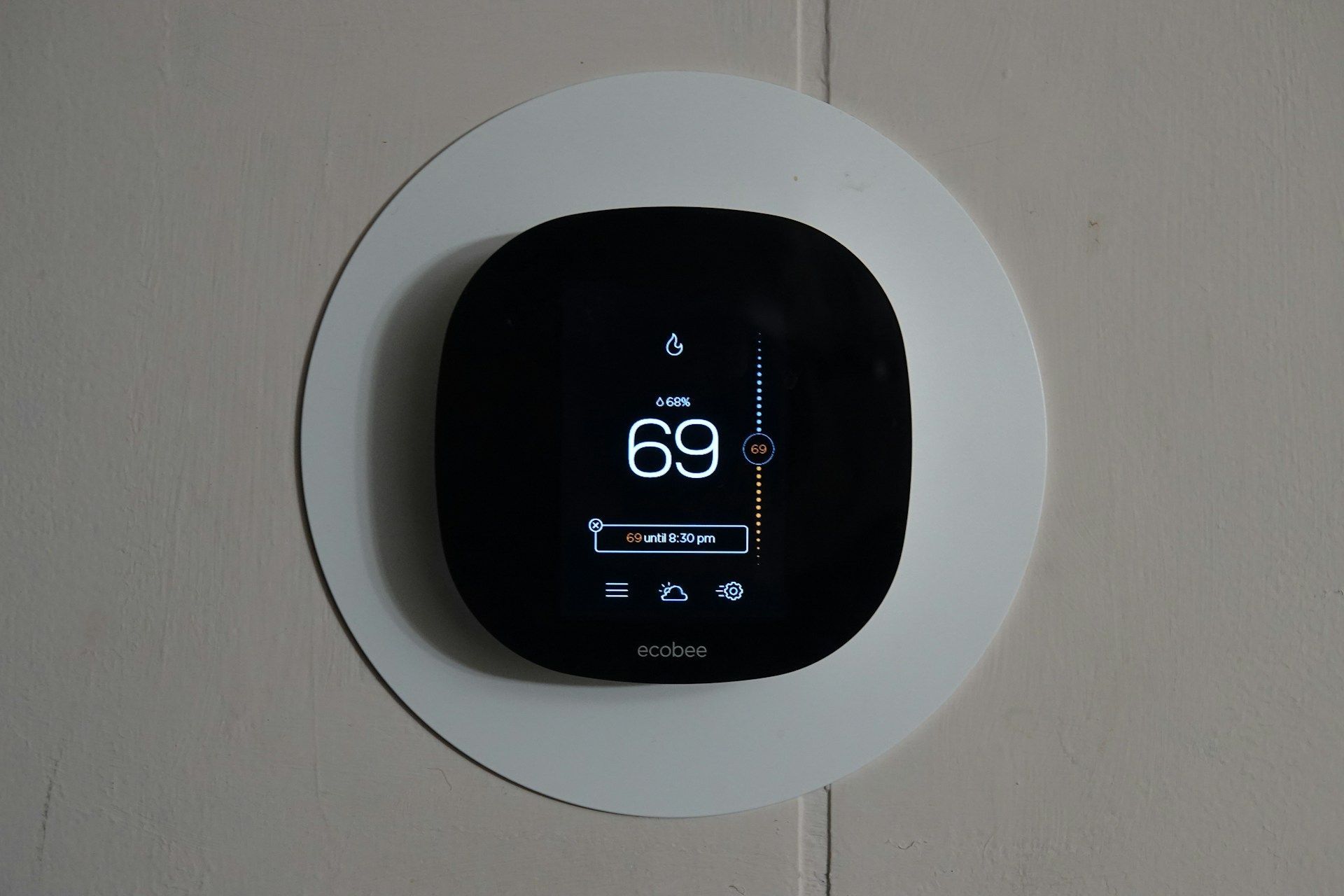Simple Ways to Lower Your Heating Bill
Keeping your home warm and energy-efficient during the cold months doesn't have to be complicated. With a few smart changes, you can save energy and keep your heating bills low. Small adjustments can have a big impact on your home's warmth and comfort.
Whether it's upgrading to a smart thermostat or improving your home's insulation, there are many ways to enhance heating efficiency. By focusing on a few key areas, you can ensure your home stays cozy without overspending on energy. Let's explore some practical tips to make your home a snug and energy-efficient haven this winter.
Upgrade to a Programmable or Smart Thermostat
Using a programmable or smart thermostat can greatly increase your home's energy efficiency. These devices let you customize your heating schedule according to your daily routine, making sure your home is warm when you need it and saving energy when you don't. A smart thermostat is especially nifty as it learns your habits over time and can adjust settings automatically for the best temperature control.
One major benefit of these thermostats is their ability to manage temperatures more efficiently. By setting specific temperatures for different times of the day, such as lowering the heat during work hours or at night, you reduce energy waste. This not only conserves energy but can also lower your heating bills.
To get the most benefit, try using these tips for setting your thermostat:
1. Set It and Forget It: Program the thermostat to drop 7-10 degrees when you are asleep or away from home for optimal savings.
2. Hit 68 Degrees: During the day when you're home, keep the thermostat at 68 degrees as a comfortable and energy-efficient setting.
3. Use Vacation Mode: If you're going away, use the "away" or "vacation" mode to save energy while ensuring your home stays safe.
A programmable or smart thermostat helps you take control of your energy use while keeping your home pleasant and inviting.
Maintain Your Heating System Regularly
Regular maintenance is crucial to keep your heating system running efficiently. Just like any other equipment, your heating system needs periodic check-ups to work its best. This ensures it keeps your house warm and operates smoothly throughout the colder months.
Maintenance tasks are simple but vital. Checking and changing filters is one of the easiest things you can do to boost efficiency. Clean filters ensure proper airflow, prevent dust buildup, and help your system last longer. Similarly, cleaning ducts and vents remove obstacles that block airflow and stress the system.
Every heating system benefits from:
1. Seasonal Inspections: Schedule bi-annual inspections to catch small issues before they become big problems.
2. Cleaning Components: Dust and debris can hamper performance, so schedule regular cleaning of critical parts.
3. Checking Thermostat Settings: Ensure the thermostat functions correctly and is calibrated for accurate temperatures.
These steps improve system efficiency, lower energy bills, and prolong the life of your heating equipment. This maintenance keeps your system from working harder than it needs to, maintaining comfort without wasting energy. Keep up with these basic tasks and enjoy a warm, cozy home all winter long.
Maximize Insulation and Sealing
Effective insulation is crucial for keeping your home warm during the cold months. It acts as a barrier, preventing warm air from escaping and cold air from entering. A well-insulated home means your heating system doesn’t have to work as hard, which can save you money on energy bills.
To maximize insulation, start by checking common areas where heat may escape, like windows, doors, and attics. Seal any gaps or cracks around windows and doors using weatherstripping or caulking. These materials are affordable and easy to apply, keeping drafts at bay.
In the attic, adding layers of insulation can trap more heat inside your home. Options like fiberglass batting or foam board are effective choices. Also, look into insulated attic hatches; they prevent warm air from leaking through the ceiling.
Homeowners can also consider simple DIY solutions to improve insulation:
- Use Draft Stoppers: Place these at the base of doors to stop heat loss.
- Cover Windows with Insulation Film: A temporary yet effective solution for the cold months.
- Seal Electrical Outlets: Use foam gaskets to block drafts that seep through outlets on exterior walls.
These steps can significantly enhance your home's insulation, keeping it cozy while minimizing energy waste.
Use Energy-Efficient Window Treatments and Rugs
Window treatments and rugs do more than decorate your home; they play a big role in keeping it warm too. Heavy curtains or thermal blinds trap air between the window and the fabric, reducing heat loss and keeping your home comfortable. By investing in these treatments, you maintain warmth without running the heater nonstop.
Installing heavy curtains is an effective and straightforward way to reduce heat loss. They act as barriers, stopping the warm air in the room from escaping through glass panes. Look for curtains with thermal lining to get the best results.
Rugs also help maintain warmth, especially on bare floors. Placing rugs on hardwood or tile floors adds a layer of insulation, making rooms feel warmer underfoot. This can be especially helpful in rooms with little furniture or minimal flooring coverage.
Consider these energy-efficient products to enhance warmth:
- Cellular Shades: Honeycomb-shaped shades that trap air and insulate windows.
- Thermal Curtains: Made with insulating layers to block chilly drafts.
- Area Rugs with Padding: Add extra insulation to floors, particularly over cold surfaces.
Incorporating these simple additions can make a notable difference and help you save on heating costs.
Conclusion
Keeping your home warm and energy-efficient is not just about comfort—it's about smart management of your heating system and home resources. Implementing these strategies can lead to a more pleasant living environment and can greatly reduce energy costs. By taking care of your heating system, maximizing insulation, and using smart thermostats, you maintain warmth while curbing unnecessary expenses.
Energy costs can take a big bite out of your budget, but with the right measures, you make a significant dent in your energy use without skimping on comfort. Remember, even small adjustments can yield significant benefits. And as you enjoy a warmer, more energy-efficient home, you'll take satisfaction in knowing that you've made smart choices for both your family and the environment.
If you're ready to take your home's heating efficiency to the next level, contact Anytime Heating & Air. Our team can help you implement these strategies to improve comfort and reduce energy bills. Contact us for more information on how our
HVAC solutions can help make your home a cozy haven all season long.


